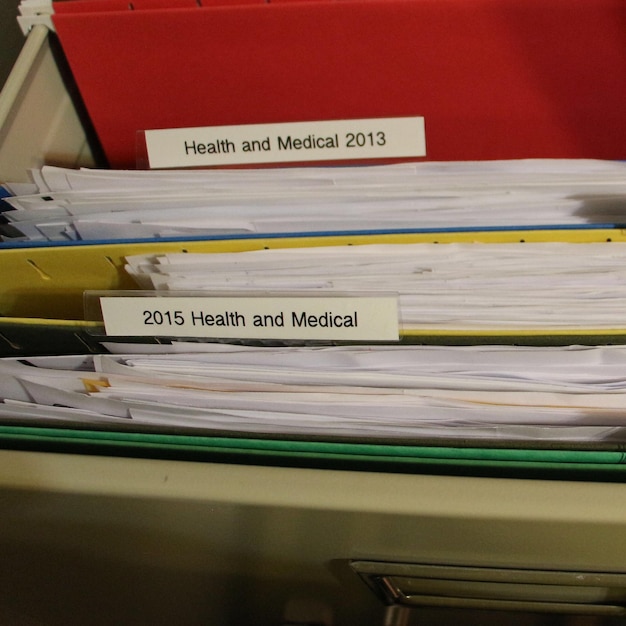SSDI: A Step-by-Step Guide to Applying for Disability Benefits

Navigating the Social Security Disability Insurance (SSDI) application process can be daunting. This comprehensive guide provides a step-by-step approach to understanding eligibility, gathering necessary documentation, completing the application, and managing the appeals process, ensuring you’re well-equipped to pursue the benefits you deserve.
Applying for Social Security Disability Insurance (SSDI): A Step-by-Step Guide to Applying can seem like navigating a complex maze. Many individuals find the process overwhelming, but understanding each step can significantly improve your chances of a successful application. This guide provides a clear, actionable path to help you through every stage.
Understanding SSDI: What is it and Who is Eligible?
Social Security Disability Insurance (SSDI) is a federal program designed to provide financial assistance to individuals who are unable to work due to a disability. It’s funded through payroll taxes, meaning that those who have worked and paid Social Security taxes are eligible to receive benefits if they meet certain criteria.
To be eligible for SSDI, you must have a medical condition that prevents you from engaging in substantial gainful activity (SGA). This means you can’t do work that earns you a significant income. The Social Security Administration (SSA) also requires that your disability has lasted, or is expected to last, at least 12 months or result in death.
Medical Requirements for SSDI
Meeting the medical requirements is crucial for SSDI eligibility. The SSA maintains a “Listing of Impairments” (also known as the “Blue Book”) that outlines specific medical criteria for various conditions. If your condition meets or equals a listing, you may be automatically approved for benefits.
Work History Requirements for SSDI
In addition to the medical requirements, you must also meet certain work history requirements. The SSA uses a system of “work credits” based on your earnings. The number of credits you need depends on your age at the time you become disabled. Generally, younger individuals need fewer work credits than older individuals.

Understanding these requirements is the first step in determining whether you are eligible for SSDI. If you believe you meet both the medical and work history criteria, you can proceed with the application process.
In summary, SSDI provides vital support for those unable to work due to disability, but eligibility hinges on meeting strict medical and work history criteria. Understanding these requirements is crucial before beginning the application process.
Gathering Necessary Documentation for Your SSDI Application
Before you begin your SSDI application, it’s essential to gather all the necessary documentation. This will help streamline the process and ensure that the SSA has all the information they need to make a decision. Having your documents in order can prevent delays and potential denials.
The specific documents you’ll need may vary depending on your individual circumstances, but here’s a general checklist to get you started:
- Social Security Number: Both yours and those of your spouse and dependent children.
- Proof of Age: Such as a birth certificate.
- Medical Records: Including doctor visit summaries, hospital records, lab results, and imaging reports.
- Work History: Dates of employment, job titles, and a description of the type of work you performed.
Medical Evidence is Key
Medical evidence is arguably the most important component of your SSDI application. The SSA will use this evidence to determine whether you meet the medical requirements for disability. Make sure to include detailed information about your medical condition, including diagnoses, treatments, and prognoses.
Documenting Your Work History
Accurate and detailed information about your work history is also crucial. The SSA will use this information to determine whether you have enough work credits to be eligible for SSDI. Include dates of employment, job titles, and a description of the type of work you performed.

Gathering the necessary documentation before you start your SSDI application will save you time and effort in the long run. It will also increase your chances of a successful application by providing the SSA with all the information they need to make a decision.
In conclusion, the application process greatly benefits from having thorough documentation of your medical condition and work history upfront, making the process smoother and increasing the chances of approval.
Completing the SSDI Application: Online vs. In-Person
When you’re ready to apply for SSDI, you have two primary options: applying online or applying in person. Each method has its own advantages and considerations. Understanding these differences can help you choose the option that best suits your needs and circumstances.
Applying online is generally the most convenient option, as you can complete the application from the comfort of your own home. The SSA’s website provides a user-friendly interface and step-by-step instructions. However, it requires access to a computer and internet connection.
Applying Online
The online application is available on the SSA’s website. You’ll need to create an account and follow the prompts to complete the application. Be prepared to provide detailed information about your medical condition, work history, and personal information. You can save your progress and return to the application later if needed.
Applying In-Person at a Social Security Office
If you prefer a more personal touch, you can apply in person at your local Social Security office. This option allows you to speak directly with an SSA representative who can answer your questions and guide you through the application process. This may be particularly helpful if you have complex medical conditions or work history.
- Scheduling an Appointment: It’s recommended to schedule an appointment before visiting a Social Security office.
- Preparing for Your Visit: Bring all the necessary documentation with you to your appointment.
- What to Expect: An SSA representative will review your application with you and answer any questions you may have.
Whether you choose to apply online or in person, it’s important to be thorough and accurate when completing the application. Provide as much detail as possible about your medical condition, work history, and any other relevant information. This will help the SSA make an informed decision about your eligibility for SSDI.
In summary, both online and in-person SSDI applications have distinct advantages; the best choice depends on individual preferences for convenience versus personal assistance.
What Happens After You Apply: The Disability Determination Process
Once you’ve submitted your SSDI application, the SSA will begin the disability determination process. This process involves a thorough review of your medical records, work history, and other relevant information to determine whether you meet the medical requirements for disability.
The disability determination process typically takes several months to complete. The SSA may request additional medical information from your doctors or ask you to undergo a consultative examination (CE) with a physician chosen by the SSA.
Initial Review
The first step in the disability determination process is an initial review of your application by a disability examiner. The examiner will review your medical records, work history, and other relevant information to determine whether you meet the medical requirements for disability.
Medical Examination
If the disability examiner needs more information, they may request a consultative examination (CE) with a physician chosen by the SSA. The CE is a general medical examination that is used to gather additional information about your medical condition.
The disability determination process can be lengthy and complex. It’s important to be patient and cooperative throughout the process. Respond promptly to any requests from the SSA and provide any additional information that may be helpful.
In summary, the disability determination process is a detailed review of your medical and work history, involving potential exams to confirm the severity of your condition, requiring patience and cooperation.
Understanding SSDI Benefit Amounts and Payment Schedules
A key aspect of understanding SSDI is knowing how benefit amounts are calculated and when payments are disbursed. The amount you receive from SSDI is based on your lifetime average earnings covered by Social Security. Understanding this calculation can help you anticipate your potential benefit.
The SSA uses a complex formula to determine your monthly SSDI benefit. This formula takes into account your earnings history and other factors. However, you can get an estimate of your potential benefit by using the SSA’s online benefit calculator.
SSDI benefits are typically paid on a monthly basis. The exact date of your payment depends on your birthdate. The SSA has a specific payment schedule that determines when each beneficiary receives their monthly payment.
Factors Affecting Your Benefit Amount
Several factors can affect your SSDI benefit amount. These include your earnings history, your age, and whether you receive other forms of income, such as workers’ compensation or other disability benefits. The SSA will take all of these factors into account when calculating your benefit amount.
What to Do If You Disagree With Your Benefit Amount
If you believe that your SSDI benefit amount is incorrect, you have the right to appeal the decision. You must file your appeal within 60 days of receiving the SSA’s notice of your benefit amount. The appeals process involves several steps, including reconsideration, a hearing before an administrative law judge, and a review by the Appeals Council.
- Request Reconsideration: The first step is to request reconsideration of the decision.
- Hearing Before an Administrative Law Judge: If your reconsideration is denied, you can request a hearing before an administrative law judge.
- Appeals Council Review: If you disagree with the administrative law judge’s decision, you can request a review by the Appeals Council.
Understanding how SSDI benefit amounts are calculated and when payments are disbursed is essential for beneficiaries. If you have any questions or concerns about your benefit amount, don’t hesitate to contact the SSA for assistance.
In conclusion, SSDI benefit amounts are influenced by your lifetime earnings and can be estimated online; if you disagree with the amount, a formal appeals process is available.
Appealing a Denied SSDI Claim: Your Options and Steps
Unfortunately, many SSDI applications are initially denied. If your claim is denied, it’s important to understand your options and take the necessary steps to appeal the decision. Appealing a denied claim can be a complex process, but it’s often worth pursuing, as many individuals are ultimately approved for benefits after appealing.
The SSDI appeals process involves several levels of review. The first step is to request reconsideration of the initial decision. If your reconsideration is denied, you can request a hearing before an administrative law judge (ALJ). If you disagree with the ALJ’s decision, you can request a review by the Appeals Council.
Why Claims Get Denied
Understanding common reasons for denial can help you strengthen your appeal. Claims are often denied due to insufficient medical evidence, failure to meet work history requirements, or a determination that the applicant can still perform substantial gainful activity.
Tips for a Successful Appeal
To increase your chances of a successful appeal, gather additional medical evidence, address any issues with your work history, and clearly explain why you are unable to work. Consider seeking assistance from an attorney or advocate who specializes in Social Security disability cases.
Appealing a denied SSDI claim can be a challenging process, but it’s important to remember that you have the right to appeal. With perseverance and the right strategy, you may be able to overturn the denial and receive the benefits you deserve.
In summary, appealing a rejected SSDI claim is a multi-step process; understanding denial reasons and seeking expert help can greatly improve your chances of success.
Maintaining Your SSDI Benefits: What You Need to Know
Once you’ve been approved for SSDI benefits, it’s important to understand what you need to do to maintain your eligibility. The SSA periodically reviews beneficiaries’ cases to ensure they continue to meet the medical requirements for disability. These reviews are known as Continuing Disability Reviews (CDRs).
The frequency of your CDR depends on the severity of your medical condition. If your condition is expected to improve, you may have a CDR as often as every few years. If your condition is not expected to improve, you may have a CDR less frequently.
It’s also important to report any changes in your medical condition, work activity, or other circumstances to the SSA. Failing to report these changes could result in a suspension or termination of your benefits.
Work Incentives
The SSA offers several work incentives to encourage SSDI beneficiaries to return to work. These incentives allow you to work and still receive SSDI benefits, as long as you meet certain requirements. Some of the work incentives include a trial work period, extended period of eligibility, and continued payment of benefits while you work.
Reporting Changes to the SSA
Any changes to your medical condition, work activity, or other circumstances that could affect your eligibility for SSDI should be promptly reported to the SSA. Common changes to report include starting or stopping work, changes in your medical treatment, and changes in your living situation.
Maintaining your SSDI benefits requires ongoing compliance with SSA requirements. Staying informed about CDRs, work incentives, and reporting obligations will ensure that you continue to receive the benefits you deserve.
In conclusion, maintaining SSDI involves periodic reviews and reporting changes to the SSA; understanding work incentives can assist beneficiaries returning to work.
| Key Point | Brief Description |
|---|---|
| ✔️ Eligibility | Meeting medical and work history requirements. |
| 📝 Documentation | Gathering medical records and work history details. |
| ⚖️ Appeals | Options and steps for appealing a denied claim. |
| 💰 Benefit Amount | Based on lifetime average earnings. |
Frequently Asked Questions (FAQ)
▼
SSDI is for those who have worked and paid Social Security taxes; SSI is a needs-based program for those with limited income and resources, regardless of work history. Both provide monthly benefits.
▼
The SSDI application process can take several months, even years, depending on the complexity of the case and the need for appeals. Patience is crucial throughout the process.
▼
Yes, with certain restrictions. The SSA offers work incentives that allow beneficiaries to work and still receive benefits, as long as they meet specific criteria and report their earnings.
▼
If your medical condition improves, it could affect your eligibility for SSDI. You are required to report any improvements to the SSA, which may lead to a Continuing Disability Review.
▼
No, you don’t need a lawyer to apply, but it can be helpful, especially if your claim is denied. A lawyer can assist with gathering evidence and navigating the appeals process effectively.
Conclusion
Applying for Social Security Disability Insurance (SSDI): A Step-by-Step Guide to Applying can be a complex undertaking, but by understanding the eligibility criteria, gathering necessary documentation, and navigating the application and appeals processes effectively, you can increase your chances of securing the benefits you deserve. Remember to stay informed, be patient, and seek assistance when needed to ensure a smooth and successful experience.





